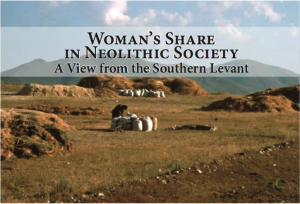
Woman doing agricultural work in rural Turkey. Photograph by Jane Peterson. (Near Eastern Archaeology, Vol. 79, Issue 3, September)
Near Eastern Archaeology 79:3 article, “Woman’s Share in Neolithic Society: A View from the Southern Levant,” by Jane Peterson, Professor of Anthropology in the Department of Social and Cultural Sciences at Marquette University.
Early farming groups set into motion substantial, even revolutionary, socioeconomic changes during the Pre-Pottery Neolithic period (ca. 10,500– 6,000 cal. b.c.e.) in the southern Levant of South- west Asia. Social organizational structures capable of addressing new opportunities and challenges would have been integral to these developments. This contribution focuses on the archaeological evidence from which our understanding of the gendered aspects of this new social order can be gleaned. Specifically, evidence for sex-based labor patterns, the relative status of men and women, and gendered ideology are discussed by synthesizing current data from human skeletal remains, mortuary contexts, architecture, and figurative art. Available evidence does not support the hypothesis that Pre-Pottery Neolithic societies were organized hierarchically in terms of gender.